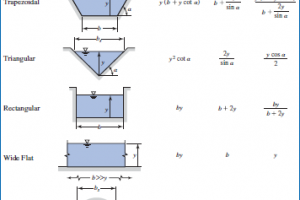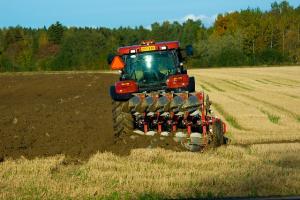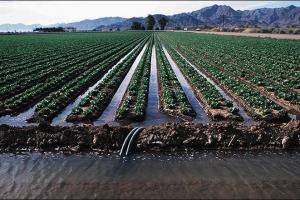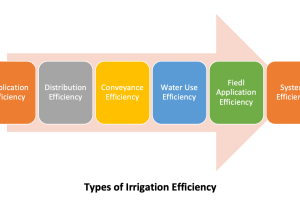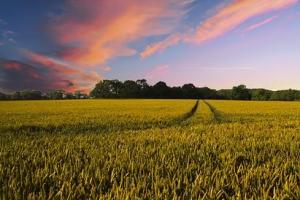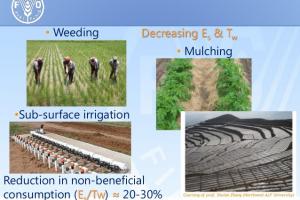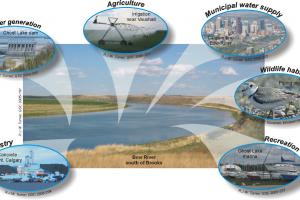Factors Affecting Crop Water Requirements
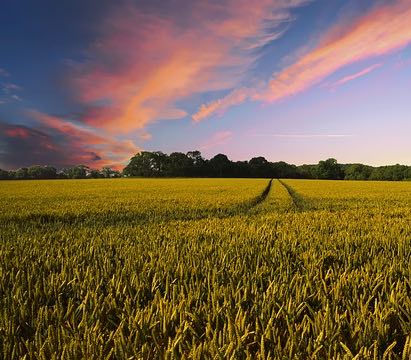
![]() See Also: Crop Water Requirement
See Also: Crop Water Requirement
The following are the factors which affect on the water requirements of the crops,
- Climate
- Type of Crop
- Water table
- Ground Slope
- Intensity of Irrigation
- Conveyance Losses
- Type of soil
- Subsoil water
- Age of canal
- Position of FSL w.r.t to NSL
- Amount of Silt carried by canal
- Wetted perimeter
- Method of Application of water
- Method of Ploughing
- Crop Period
- Base Period
- Delta of a Crop
i. Influence of Climate
In hot climate the evaporation loss is more and hence the water requirement will be more and vice versa.
A certain crop grown in a sunny and hot climate needs more water per day than the same crop grown in a cloudy and cooler climate. There are, however, apart from sunshine and temperature, other climatic factors which influence the crop water need. These factors are humidity and wind speed. When it is dry, the crop water needs are higher than when it is humid. In windy climates, the crops will use more water than in calm climates.
The highest crop water needs are thus found in areas which are hot, dry, windy and sunny. The lowest values are found when it is cool, humid and cloudy with little or no wind. From the above, it is clear that the crop grown in different climatic zones will have different water needs. For example, a certain maize variety grown in a cool climate will need less water per day than the same maize variety grown in a hotter climate.
Effect of major Climatic Factors on Crop Water Needs
|
Climatic factor |
Crop water need |
|
|
High |
Low |
|
|
Sunshine |
Sunny (no clouds) |
Cloudy (no sun) |
|
Temperature |
Hot |
Cool |
|
Humidity |
Low (dry) |
High (humid) |
|
Wind speed |
Windy |
Little wind |
Table 4 - AVERAGE DAILY WATER NEED OF STANDARD GRASS DURING IRRIGATION SEASON (mm)
|
Climatic zone |
Mean daily temperature |
||
|
low (< 15°C) |
medium (15-25°C) |
high (> 25°C) |
|
|
Desert/arid |
4-6 |
7-8 |
9-10 |
|
Semi-arid |
4-5 |
6-7 |
8-9 |
For the various field crops it is possible to determine how much water they need compared to the standard grass. A number of crops need less water than grass, a number of crops need more water than grass and other crops need more or less the same amount of water as grass. Understanding of this relationship is extremely important for the selection of crops to be grown in a water harvesting scheme.
Table 5 - CROP WATER NEEDS IN PEAK PERIOD OF VARIOUS CROPS COMPARED TO THE STANDARD GRASS CROP
|
-30% |
-10% |
Same as Standard Grass |
+10% |
+20% |
|
Citrus Olives |
Squash |
Crucifers Groundnuts Melons Onions Peppers Grass Clean cultivated nuts & fruit trees |
Barley Maize Cotton Millet Safflower Sorghum Soybeans Wheat |
Nuts & fruit trees with cover crop |
ii. Influence of crop type on crop water needs
As different crops require different amount of water for maturity, duties are also required. The duty would vary inversely as the water requirement of crop. The influence of the crop type on the crop water need is important in two ways.
a. The crop type has an influence on the daily water needs of a fully grown crop; i.e. the peak daily water needs of a fully developed maize crop will need more water per day than a fully developed crop of onions.
b. The crop type has an influence on the duration of the total growing season of the crop. There are short duration crops, e.g. peas, with a duration of the total growing season of 90-100 days and longer duration crops, e.g. melons, with a duration of the total growing season of 120-160 days. There are, of course, also perennial crops that are in the field for many years, such as fruit trees.
While, for example, the daily water need of melons may be less than the daily water need of beans, the seasonal water need of melons will be higher than that of beans because the duration of the total growing season of melons is much longer. Data on the duration of the total growing season of the various crops grown in an area can best be obtained locally. These data may be obtained from, for example, the seed supplier, the Extension Service, the Irrigation Department or Ministry of Agriculture.
Table gives some indicative values or approximate values for the duration of the total growing season for the various field crops. It should, however, be noted that the values are only rough approximations and it is much better to obtain the values locally.
iii. Water Table
If the water table is nearer to the ground surface, the water requirement will be less & vice versa.
iv. Ground Slope:
If the slope of the ground is steep the water requirement will be more due to less absorption time for the soil.
v. Intensity of Irrigation:
It is directly related to water requirement, the more the intensity greater will be the water required for a particular crop.
vi. Conveyance Losses:
Take place from barrage to the field (outlet). So design should be according to requirement of water plus losses. Major loss of water in an irrigation channel is due to absorption, seepage or percolation and evaporation. In earthen channels losses due to seepage are much more than the losses due to evaporation. The absorption losses depend upon following:
1. Type of soil
In sandy soil water percolates easily so water required is more. While in clayey soils water requirement is less.
2. Subsoil water
3. Age of canal
4. Position of FSL with respect to NSL
5. Amount of Silt carried by canal
6. Wetted perimeter
vii. Method of Application of water:
In sprinkler method less water is required as it just moist the soil like rainwater whereas in flood more water is required.
viii. Method of Ploughing:
In deep ploughing less water is required and vice versa.
ix. Crop Period:
It is the time normally in days that a crop takes from the instance of its sowing to harvesting.
x. Base Period:
Is the time in days between the first watering and last watering to the crops before harvesting.
Note: Base Period is normally less than the crop period depending upon the type of crop.
xi. Delta of a crop:
Total depth of water required by the crop in unit area during base period. In other words it is the total depth of water required for maturing the crop.
Volume = Depth x Area.
Now to get the total amount of water for crops (i.e water for Kharif and Rabi crops) add water for each crop individually as
Q = Volume / Time





